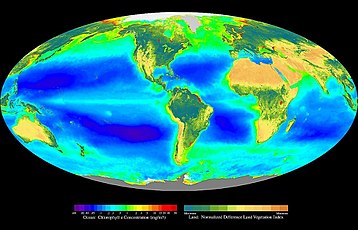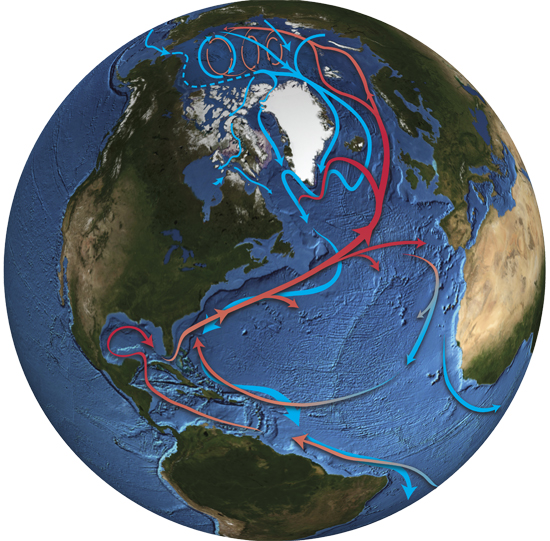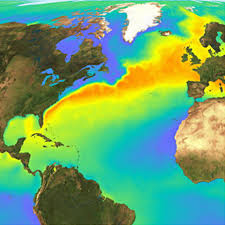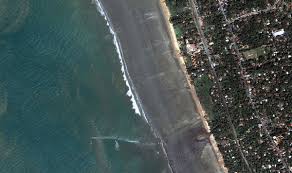Lionfish Invade U.S. WATERS from: The Lionfish Invasion! National Ocean Service. NOAA. revised March 2008
from: The Lionfish Invasion! National Ocean Service. NOAA. revised March 2008 Local divers off the coast of North Carolina were not expecting to see what they found one day in August 2002--the
exotic and beautiful lionfish, common to the warm waters of the western Pacific, but unknown at that time as residents of the Carolina coast. They provided the first solid evidence that lionfish were in the Atlantic--an actual specimen that they collected. A year later, scientists had documented 19 lionfish sightings at eight locations along the North Carolina
continental shelf. By then, lionfish were also being observed off the coasts of Florida, Georgia, and South Carolina.
Juvenile lionfish were also showing up off Bermuda and even as far north as Long Island, New York! Since then, many more United States divers have reported sightings of the distinctive fish. Between 2000 and 2003, 49 lionfish sightings were reported at 16 different shipwrecks and natural hard bottom locations. During a summer 2004 research expedition, NOAA scientists collected 155 lionfish at 19 different locations off the North Carolina coast alone. The jump in numbers and
distribution over such a short time, plus sightings of juveniles smaller than those sold for aquaria, strongly indicate that the lionfish is reproducing in the Atlantic Ocean. If this is true, it's the first time that a western Pacific fish has populated the waters of the U.S. Atlantic coast.
How did lionfish get into the Atlantic Ocean ?
Reportedly, six lionfish were accidentally released in Biscayne Bay, Florida, when a beachside aquarium or nursery broke open during Hurricane Andrew in 1992. It's likely that even more have been released on purpose when people no longer want them as aquarium pets because they grew too large for the

aquarium, or they learned the hard way that lionfish will eat their other fish! The swift and warm Gulf Stream, which likely transported buoyant lionfish eggs and larvae from Florida northward, helped the lionfish's Atlantic journey.
The red and black dots are locations in the Atlantic Ocean where lionfish have been reported as of May 2003. Notice that sightings are few north of Cape Hatteras. Because lionfish are normally found in subtropical and tropical waters, their distribution is limited in the Atlantic by the colder temperate waters north of Cape Hatteras, where the warm Gulf Stream flows away from the continental shelf. (Photo credit: Paula Whitfield) However, from north Florida upward, the waters along the coastline are too cold in the winter for lionfish to survive. Scientists expect them to survive the winter only at water depths greater than 120 ft because this is where the Gulf Stream has influence all year long. Very importantly, the types of
predators and
competitors present in the marine
community in the Atlantic are very different from the native range of the lionfish. These are a couple of the reasons why scientists are paying so much attention to the lionfish invasion. Generally,
species like the lionfish have not been perceived to pose a significant threat to marine
ecosystems because they were not likely to survive long. Research on this topic has been minimal, however, so it is hard for scientists to answer questions such as:
It's pretty unusual for non-
native, tropical marine fishes, like the lionfish, to establish themselves at this latitude. In Florida waters and along the continental shelf near the Gulf Stream the temperatures are very similar to the lionfish's native waters.
 The warm Gulf Stream current (in red) may have dispersed lionfish as far as North Carolina and Bermuda, where water temperature is similar to their native habitat. Lionfish larvae may have been carried in the Gulf Stream to the northeast in a similar wa
The warm Gulf Stream current (in red) may have dispersed lionfish as far as North Carolina and Bermuda, where water temperature is similar to their native habitat. Lionfish larvae may have been carried in the Gulf Stream to the northeast in a similar wa For now,
reef communities in the western Atlantic Ocean are unlikely to be in much danger, since the number of lionfish is still relatively small. If the population grows large, though, lionfish could damage the
native ecosystems. At the same time, other factors are already causing stress to these
ecosystems, and these stress factors or "
stressors" tend to favor the lionfish's expansion.

Lionfish also are believed to pose particular risks to the local environment. They are hungry
predators that feed on practically anything that swims. They can easily devour the young of important commercial fish
species, such as snapper, grouper and sea bass, many of which use the region's "live bottom" reefs as nursery grounds. Lionfish are ambush predators and may use their outstretched, fan-like
pectoral fins to "corner" their
prey. They don't sting their prey, though. Their
venomous spines are used mostly for defense. Scientists are concerned that lionfish could seriously reduce the numbers of prey species and/or
compete with other reef
predators. When a new species is introduced in an area, it can take over the
niche, or role, of a native species in its
ecosystem, thus squeezing it out--this process is called competition. Another important factor is that
native prey species lack of experience in confronting the intimidating lionfish might make the lionfish a
more effective predator.
Is the Aquarium Trade to Blame?The aquarium trade appears the most likely vector for the introduction of lionfish into U.S. waters, but the lionfish's introduction into the Atlantic remains something of a mystery. Recent research indicates that a number of other tropical aquarium fish are currently s

urviving off the coast of Florida. Also, the color patterns of lionfish sighted off the Atlantic coast of the U.S. are similar to those from the Philippines, where many lionfish are collected for the aquarium trade.
In Europe imports of a wide range of popular wild-caught tropical fish have been restricted of banned in 2008 Import Directive. All European Union Member sgtates and some members of the European Economic Union including Norway were required to put regul;ations in place to implement this directive by May 2008. The United States is considering similar bans on aquarium fish imports.
Scientists say it is impossible to determine if the lionfish released in 1992 account for the
species invasion of Atlantic Ocean. Some scientists have suggested that lionfish entered Atlantic waters when larvae or juvenile fish were trapped in ships moving from the Pacific to the Atlantic and were released when the
ballast water was pumped out.
However, there is no evidence to support ballast water as the source for the lionfish invasion, although it is a common source of aquatic
alien species introductions generally. Further, although lionfish have been introduced into the western Mediterranean, probably through the Suez Canal, there is no evidence that they crossed the Atlantic or that they entered the Atlantic through the Panama Canal. Besides, it is very unlikely that the tropical lionfish could survive a journey across the cold water between the two oceans.
(http://oceanservice.noaa.gov/education/stories/lionfish/lion03_blame.html)
Another Juliane link suggestion right HERE. ALIENS EVERYWHERE !!!!























